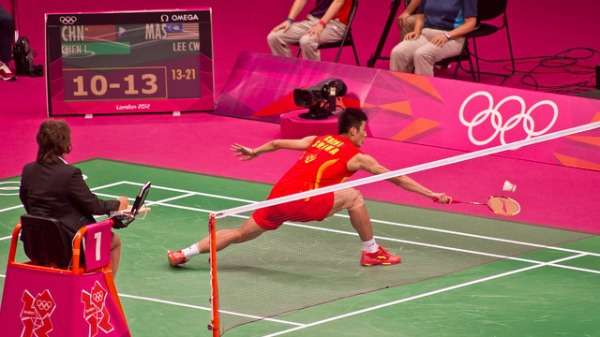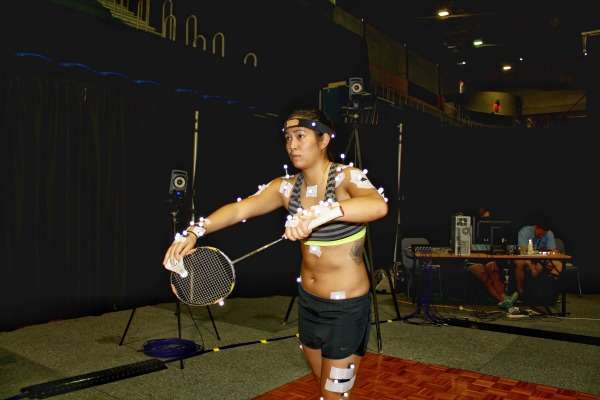3-D video serves up top badminton players for Rio

As Australia's Olympics team make final preparations for their events over the next two weeks the badminton team may hold a competitive edge thanks to the use of 3-D motion capture analysis which has helped improve their performance.
The research led by Edith Cowan University had athletes perform a short serve—a skill shown to set up winning points—while utilising the technology.
Four of the five Australian badminton players that were selected for the Rio Games took part in the analysis—Robin Middleton and Leanne Choo (mixed doubles) together with Matt Chau and Sawan Serasinghe (men's doubles).
The researchers then used the Vicon Motion Analysis system at the Australian Institute of Sport to measure players' full body 3-D kinematics, as well as trajectory, shuttle velocity and accuracy of the serve.
To employ the optoelectronic motion analysis each athlete had 'markers'—small target balls covered in reflective tape—placed on their body segments as well as on the racquet and shuttle.
The then used twenty infra-red cameras to capture light reflected from the markers which was then manipulated by computer software to construct real-life 3-D positions.
The test results were able to improve the athlete's short serve technique, according to Dr Jodie Cochrane Wilkie from ECU's School of Medical and Health Sciences.

The short serve has a shorter and lower trajectory with it being aimed towards the front of the court, proving an effective strategy during a doubles game, Dr Cochrane Wilkie says.
In order to perform a short serve successfully, an athlete attempts to hit the shuttle as low and close to the net as possible, forcing the returner to hit the shuttle upwards.
This in turn provides the server with an opportunity to smash the shuttle back down into the court from an advantageous position.
Other steps in the research involved providing athletes and coaches with qualitative video feedback sessions where they could formulate strategies designed to improve their technique.
"We interpret the information and determine which techniques produce better performances," Dr Cochrane Wilkie says.
"We then work with the athletes to improve their techniques and implement training programs to improve their skill performance."
Following the Rio Games, the researchers will conduct further tests to build on the information they have already obtained.
Provided by Science Network WA
This article first appeared on ScienceNetwork Western Australia a science news website based at Scitech.




















